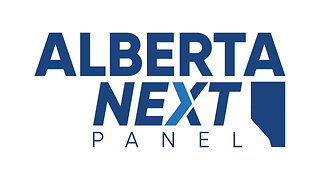Premium Only Content

SME IPO v/s Mainboard IPO
For more interesting videos - https://m.youtube.com/@MHInsightful/videos
For Academic Videos from FY to TY , MCOM , etc..:-https://m.youtube.com/@Prof.M.H/
### **SME IPO:**
- #SMEIPO
- #SmallBusinessListing
- #SMEExchange
- #LowerRegulations
- #NicheInvestors
- #CostEffectiveIPO
- #LiquidityChallenges
### **Mainboard IPO:**
- #MainboardIPO
- #LargeCompanyListing
- #MajorStockExchange
- #HigherRegulations
- #BroaderInvestorBase
- #HigherCosts
- #GreaterLiquidity
An SME IPO (Initial Public Offering) and a Mainboard IPO refer to two different segments of the stock market where companies can go public. Here’s a comparison:
### **SME IPO:**
1. **Target Companies**: Typically for small and medium-sized enterprises (SMEs) that may not meet the larger financial or regulatory requirements of a Mainboard listing.
2. **Regulatory Requirements**: Generally less stringent than those for Mainboard listings. The entry criteria, disclosure requirements, and corporate governance standards may be more relaxed.
3. **Market Segment**: Usually listed on a specialized SME exchange or a separate board designed for smaller companies. Examples include the SME boards of various stock exchanges, like the NSE Emerge in India.
4. **Investor Base**: Often targeted at a more niche group of investors, which might include retail investors looking for growth opportunities in smaller firms.
5. **Costs and Fees**: IPO costs may be lower compared to Mainboard listings, making it more accessible for SMEs.
6. **Liquidity and Visibility**: SME stocks may have lower liquidity and visibility compared to Mainboard stocks, which can impact trading volume and investor interest.
### **Mainboard IPO:**
1. **Target Companies**: Typically for larger, more established companies that meet rigorous financial, regulatory, and governance standards.
2. **Regulatory Requirements**: Higher standards for financial disclosures, corporate governance, and reporting. The listing process is generally more comprehensive.
3. **Market Segment**: Listed on the main board of a major stock exchange, such as the NYSE, NASDAQ, LSE, or the main board of other national exchanges.
4. **Investor Base**: Attracts a broader range of institutional and retail investors due to the higher visibility and perceived stability of the companies listed.
5. **Costs and Fees**: Higher costs associated with compliance, underwriting, and other IPO-related expenses.
6. **Liquidity and Visibility**: Generally higher liquidity and greater visibility, leading to potentially more robust trading activity and investor interest.
In summary, SME IPOs are designed to accommodate smaller companies with less stringent requirements, whereas Mainboard IPOs cater to larger companies with higher regulatory standards and greater market exposure.
-
 11:14
11:14
China Uncensored
6 hours agoThis Is NOT What China Wanted To Happen
1.19K5 -
 LIVE
LIVE
ABD
1 hour agoCyberpunk 2077 | EP 2 - The Opening Act Pt.2 | 4K UHD
27 watching -
 11:11
11:11
Michael Button
9 hours ago $0.25 earnedMy Joe Rogan Experience: Behind the Scenes
3.59K1 -
 LIVE
LIVE
Charlotte Winslow
6 hours agoplaying GTA 5 for the First Time Ever in 2025 | OPEN WORLD WEDNESDAY
155 watching -
 UPCOMING
UPCOMING
Badlands Media
19 hours agoAltered State S3 Ep. 43
11.3K -
 UPCOMING
UPCOMING
FomoTV
5 hours agoAmerica First or Finessed? 🇺🇸 0% Inflation & $9.62 a Week Math | Catholic School Shooting Update | Fomocast 08.27.25
55 -
 LIVE
LIVE
Dragoon_B
3 hours agoDragoon - Counter Strike - Noob to Pro Grind
114 watching -
 8:26
8:26
WhaddoYouMeme
7 hours ago $0.16 earnedThe Internet Lied. He Just Destroyed His Life
3.55K6 -
 46:58
46:58
The Mel K Show
2 hours agoLive Q&A with Mel K 8-27-25
22.7K6 -
 LIVE
LIVE
daniellesmithab
2 hours agoAlberta Next: Lloydminster Town Hall
36 watching